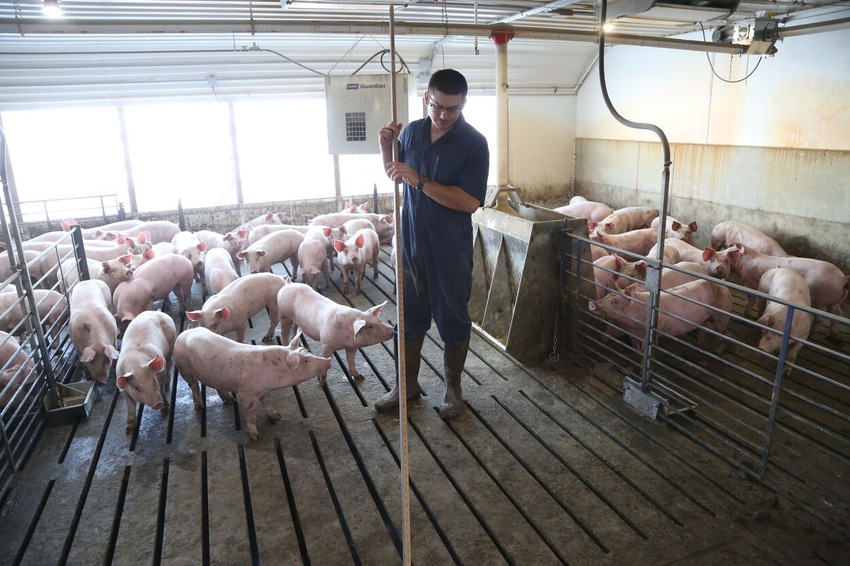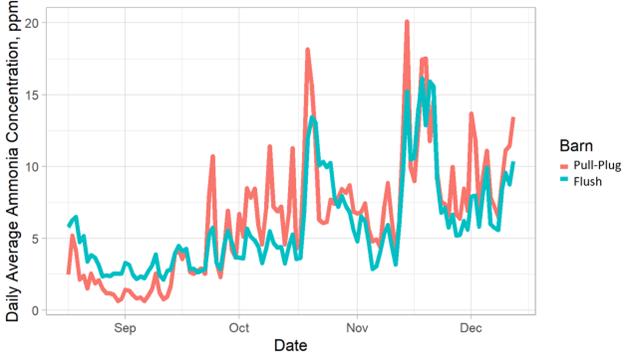Ammonia and waste management systems in wean-finish barns
Data compared flush, pull plug systems to evaluate impact on indoor air quality conditions.
April 6, 2023

Pig manure contains a wide variety of corrosion-inducing chemicals such as ammonia. Ammonia production and its release are influenced by temperature and moisture in the barn environment, as well as number and size of the pigs.
High levels of ammonia can negatively affect pig health and growth, as well as pose a risk to human health. The OSHA Permissible Exposure Limit for an 8-hour workday is 50 parts per million. Additionally, even at low levels, ammonia reacts with humidity and causes premature corrosion of barn equipment and is a threat to the structural integrity of livestock buildings.
In this study, ammonia levels were monitored and compared between two 880-head wean-finish swine facilities with different types of waste management systems. Both facilities had shallow manure pits, one containing a flush system to remove waste approximately three times per day, and the other containing a pull plug system to remove waste every 7-10 days. Barns were mechanically ventilated.
Sensors were placed at the back of the barn to record ammonia, air temperature and relative humidity every 10 minutes for an entire wean-finish cycle (approximately 20 weeks) from August to December. Data were compared between the facilities to evaluate the waste management systems’ impact on indoor air quality conditions.
While the temperature and relative humidity conditions were similar between the two barns, the pull-plug barn generally had greater ammonia levels than the flush barn. The differences were especially noticeable on low ventilation days when the indoor temperature was more than 7 degrees Fahrenheit greater than outdoor temperature.

As expected, outdoor temperature, indoor temperature and indoor relative humidity also influenced ammonia levels. Ventilation rates have an important impact on ammonia levels. In both facilities ammonia levels were below OSHA requirements and NIOSH recommendations. Regardless of waste management system type, providing proper indoor environmental conditions can improve pig performance and facility longevity.
Special thanks to our cooperating industry partners for the use of facilities and data. This project was funded in part by the National Pork Board.
You May Also Like



